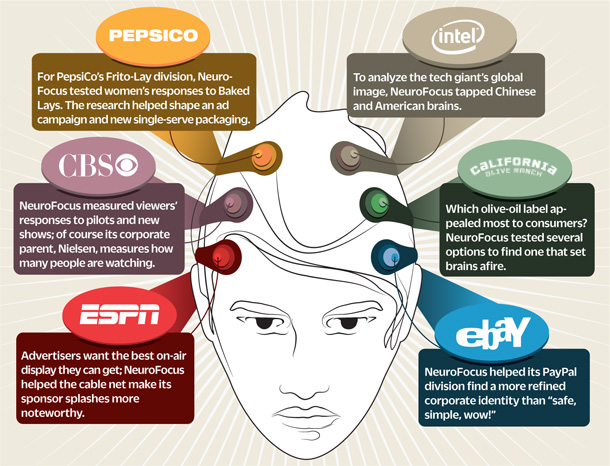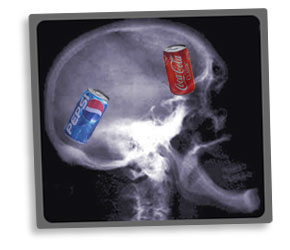I did not know much about Neuromarketing before coming to this event. My knowledge was mainly based on the Neuromarketing blog, which I actually read quite often.
The conference had a prestigious panel:
- Henri Kaufman was the host, and animator of the conference.
- Pierre Gomy Marketing director at France Millward Brown France, which talked about the company's experiences held in Great Britain.
- Mark Van Rymenant founder of Netway, a Belgian company specialized in Neuromarketing since 1997.
- Marie de Linage Europe CRM manager Sony, which talked about her experience with neuromarketing techniques.
- Bruno Teboul, an expert of neuromarketing, soon to get his Phd, he is studying the usage of neurosciences for marketing purposes around the globe. He is also the author of "L'Absolu Marketing", which explains all the new marketing trends from the big data to neuromarketing. I haven't read it yet, but I am planning to soon.
Here are some highlights of the conference:
Read Montague's Study
Neuromarketing has really emerged in 2003, when Read Montague studied thanks to IRM scans 50 volunteers to taste Coke and Pepsi sodas. It appears that out of these 50 people, 49 prefered Pepsi while blindfolded, but once people knew which brand was which soda, the results were reversed. The study showed how brands could change one product perception. Its since this research thanks to IRM that neuromarketing really started.
The button to buy
There is no real trigger in the brain that you need to push for someone to buy. Though there are some well known now zones that have a key role during the decision making process. There is such a high complexity in the brain that the interconnections between the different zones makes it impossible to resume the action of neuromarketing by simply pressing one button.
The brain map
Thanks to the important work of research around neurosciences, scientists have been able to set up a map of the brain. There are 52 zones in the brain that have been noticed. Each zones have different roles. Actually, the researches have also established that human brains are similar to other human brains by 99%.
It is thanks to this map that we are now able to understand and make experimentations through IRM and use them.
Why Neuromarketing Matters
- 5% of what we do is conscious
- 95% is unconscious
Marketers have spent years to work on the conscious part, trying to understand the logical aspect of customers' decision making process. But now neuromarketing techniques allow to explore the other 95%.
Also:
- 85% of decision made are based on emotions
- 15% by rational thoughts.
How That Works?
There are 3 techniques that are used:
- Eye Tracking: We use technologies following the eye movements in order to see what catches the attention of someone.
- Electrophalogram: The most used techniques
- IRM: The most precised one, but the most difficult to use.
About the IRM technique, most of the time it is used only on 6 to 8 people, because it is pricy, difficult to get (you need to use hospital material), but also because it is enough to have usable results.
Even though it is the most famous technique, it only represents 15% of the researches conducted.
Culture, Sociology and the Brain
There is a certain "plasticity" to the brain. Indeed, people from certain cultures may have been used to certain cultural or social things that may shape the way they percieve things. Even though studies seem to tell that there is no particularity. For example, the color red is associated with stopping, because the color red has been chosen for the red lights. You may change the red light color for yellow, it will take a while for people to adapt and the red to get back to a normal color.
So far I believe it is too early to say if culture and society may impact neuromarketing results.
Sony Case's Study
Sony Europe had issues with the different local marketing departments to implement the European guidelines about Sony's brand content. Most of the time, local branches argued that the European guidelines were sometimes not adapted to local market. Sony decided to use neuromarketing in order to test then its messages and brand components thanks to the eye tracking techniques. Through small tests, on some emailing campaigns, they experienced great results, which pushed them to experiment more. It helped Sony to rationalized its European guidelines, thanks to the neuromarketing results they got.
I will post soon a new note about what I think about neuromarketing. The aim of this article is to sare with you the great knowledge I got thanks to this conference.

